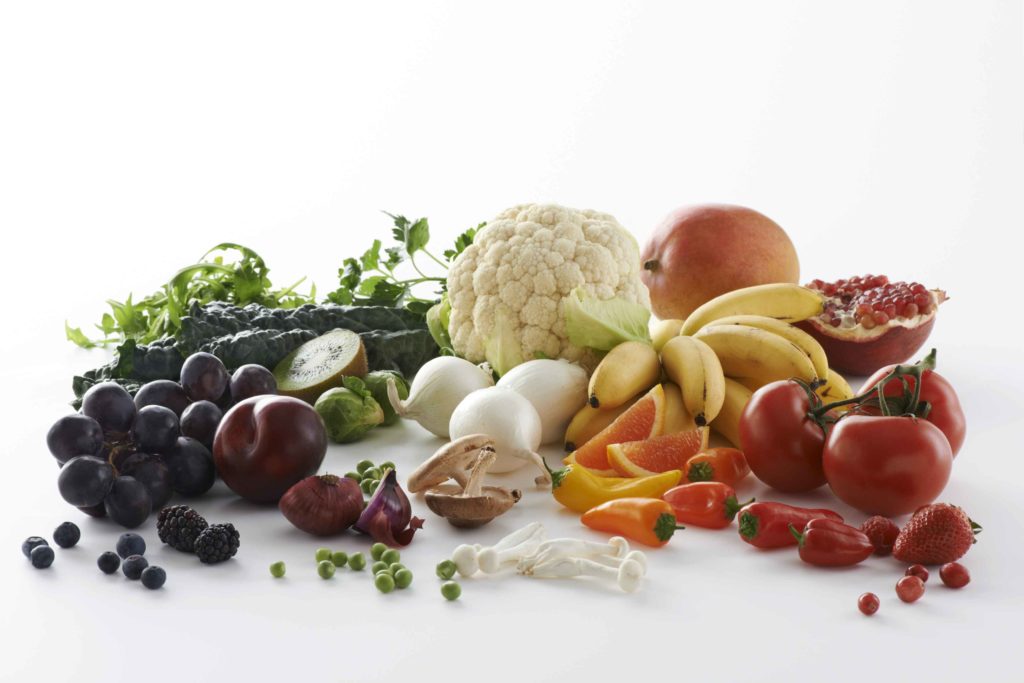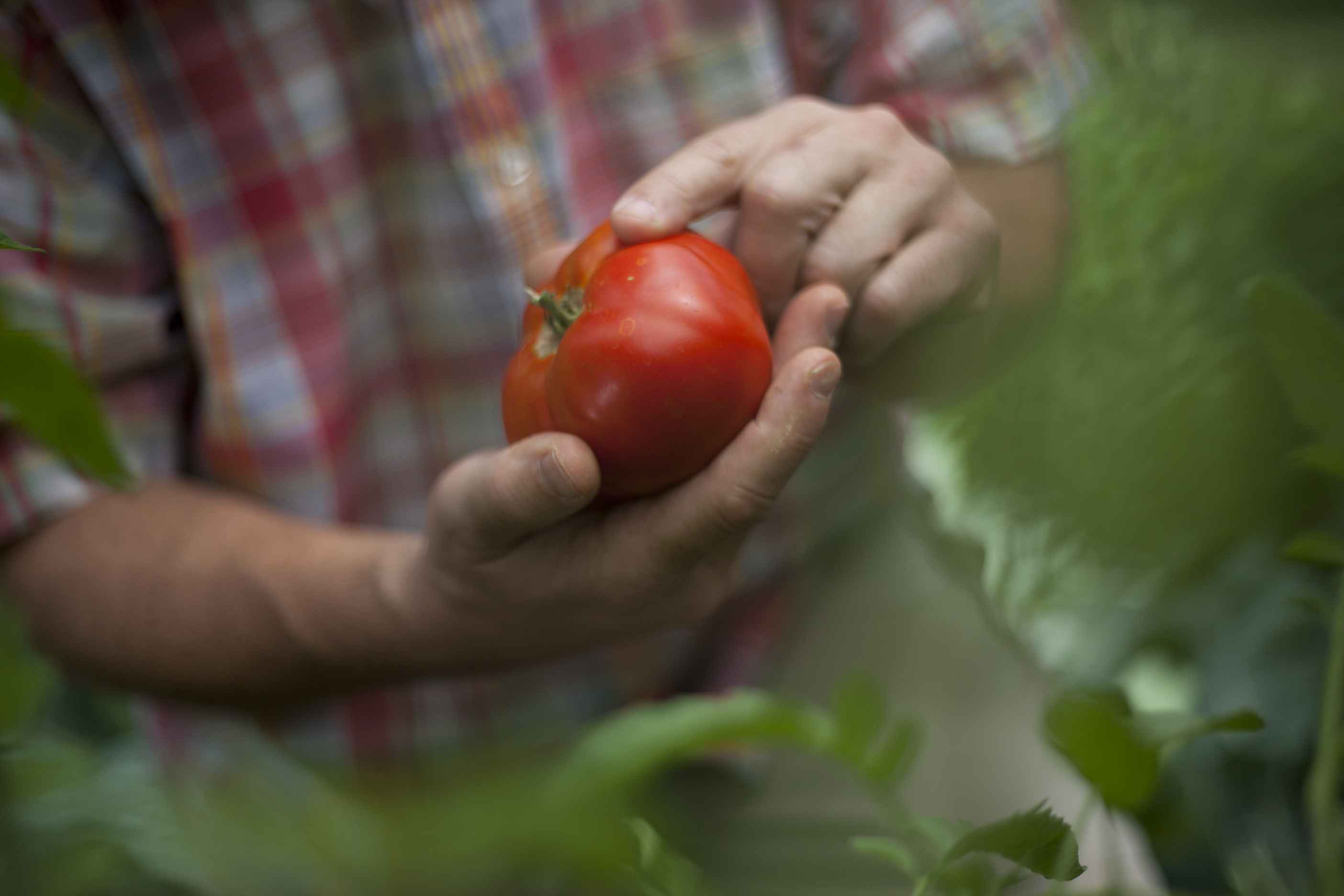
Eating well isn’t rocket science. Study after study confirms that a healthy diet is a plant-based diet. Yes, you could dive deep into the research, like our Nutrilite scientists do, to uncover the amazing synergy of plant compounds and their impact on our health. But sometimes a simple rule-of-thumb is all you need. One of the easiest ways to improve your diet is to do one thing: Eat plenty of vegetables and fruits (mostly vegetables) in a wide variety of colors, every day.
Phytonutrients: Protecting plants, protecting people
Researchers have now identified at least 10,000 phytonutrients that give the plant foods we eat their distinctive color, aroma and flavor. Among them are compounds with antioxidant and free radical scavenging properties that also protect plants from pollution, predators, disease and other threats.
Turns out, many of these very same compounds also help protect us … but only when we eat them.
What’s in that color?
The best way you can ensure you consume enough protective phytonutrients is to eat a variety of colorful vegetables and fruits each day. Variety is important as different types of plants contain different phytonutrient profiles. So, the phytonutrients in lemons and other citrus fruits are different than those in broccoli and other cruciferous vegetables.
Color is a key factor as well since different color groups have different phytonutrient profiles. The red pigment in a tomato, for example, has a completely different phytonutrient profile than the orange pigment in a carrot.
One simple way to increase your daily intake is to focus on eating plant foods in different color groups such as the following:
Purple Plant Foods
From the deep violet-purple of an eggplant to the purple-red of a beet to the bluish purple of blueberries, there are many shades of purple. Vegetables and fruits in this color group tend to be rich in anthocyanins, a group of phytonutrients shown to promote brain health.

Red Plant Foods
Some red plant foods like tomatoes get their color from lycopene, a key phytonutrient with powerful antioxidant activity. Researchers are discovering that this natural pigment helps promote heart and circulatory health. Like the purple food group, some vegetables and fruits in the red group also contain anthocyanins with anti-inflammatory and antioxidant properties.

Orange & Yellow Plant Foods
Orange-yellow fruits and vegetables such as apricots, carrots and yams tend to be rich in carotenoids. These phytonutrients include alpha-carotene, beta-carotene, beta-cryptoxanthin, lutein and zeaxanthin. Vegetables and fruits with these brain-protecting antioxidants are also being studied for their potential benefits for heart health, immune health and healthy vision.

Green Plant Food
Green vegetables and fruits contain a wide variety of beneficial phytonutrients. This includes vegetables in the cruciferous family (such as broccoli, kale, collard greens and bok choy), which are natural sources of sulforaphane, isothiocyanates, indoles and other phytonutrients with tongue-twister names. These plant powerhouses stimulate the liver’s production of protective enzymes that help keep cells throughout the body healthy.
Eat more vegetables and fruits, live longer
A growing body of research supports the notion that eating more vegetables and fruits is good for us. One recent study, published in the April 3, 2019 issue of Lancet, reveals that poor dietary habits are now responsible for more deaths globally than any other risks, including tobacco smoking.
For this study, the researchers tracked the eating habits of people from 195 countries over nearly three decades. They found an inadequate intake of vegetables and fruits to be one of the leading dietary risk factors for mortality globally. Others include diets high in sodium, low in whole grains, low in nuts and seeds, and low in omega-3 fatty acids. In this analysis, China fared well with vegetable intake with an average intake meeting the recommended target of 360 grams per day, but fell short with fruit intake, consuming only one-third of the target goal of 250 grams per day, on average.
People living in Uzbekistan, Afghanistan and the Marshall islands had among the highest diet-related deaths, while people in France, Spain and Japan had some of the lowest. China, unfortunately, ranked among the worst at 140 with a high sodium intake as the leading dietary risk for deaths. (Vegetables and fruits, which are naturally low in sodium, are a great substitute for sodium-rich foods to help reduce sodium intake.)
Eat the color of the rainbow
If you take a look at our foods at home, you will see that Francesca is an amazing artist in the kitchen. The vibrant salads that she presents at the majority of our meals at home are a feast for the eyes. She also loves to create soups, and the more vegetables in them, the better!
Use nature as your guide to paint a rainbow on your plate, whether you are preparing a meal at home, grabbing a meal on the go, or dining out. Not only will you enjoy delicious meals, but you can feel confident that you and your family are consuming foods that nourish, protect and reduce your risk of disease. Make this a lifelong habit, and you’re that much closer to optimal health.

The color challenge
Over the next few days, I encourage you to take the color challenge. How many different colors of fruits and vegetables can you eat each day? (Hint: The more the better!) Let me know how you do, and together we can all inspire others to make this one healthy habit last a lifetime.
Cheers,

P.S. Don’t forget you can subscribe to our RSS feed to have blog posts delivered right to your inbox.
